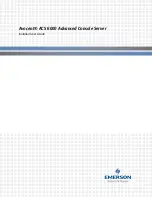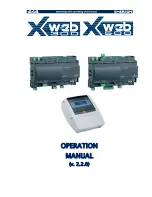
Instruction Manual
4
Conventions
This manual uses the following conventions:
Monospaced Indicates text that you should key in.
[ ] Indicates keys you should press. For example, [Enter] means to press the Enter
key. If keys need to be chorded, they appear together in the same bracket
with a plus sign between them: [Ctrl+Alt].
1. Numbered lists represent procedures with sequential steps.
Bullet lists provide information, but do not involve sequential steps.
Indicates selecting the option (on a menu or dialog box, for example)
Terminology
Throughout the manual we make reference to the terms Local and Remote in regard
to the operators and equipment deployed in a SV1108IPEXT/POW installation.
Depending on the point of view, users and servers can be considered Local under
some circumstances, and Remote under others:
Switch’s Point of View
Remote users
– We refer to a user as a Remote user when we think of him as
someone who logs into the switch over the net from a location
that
is
remote
from
the
switch.
Local Console
– The keyboard mouse and monitor connected directly to
the
switch.
Servers
– The servers attached to the switch via custom KVM cables.
User’s Point of View
Local client users
– We refer to a user as a Local client user when we think of
him as sitting at his computer performing operations on the
servers connected to the switch that is remote from him.
Remote servers
– We refer to the servers as Remote servers when we think of
them from the Local Client User’s point of view – since,
although they are locally attached to the switch, they are
remote
from
him.
When we describe the overall system architecture we are usually speaking from the
switch’s point of view – in which case the users are considered remote. When we speak
about operations users perform via the browser, viewers, and AP programs over the
net, we are usually speaking from the user’s point of view – in which case the switch
and the servers connected to it are considered remote.












































